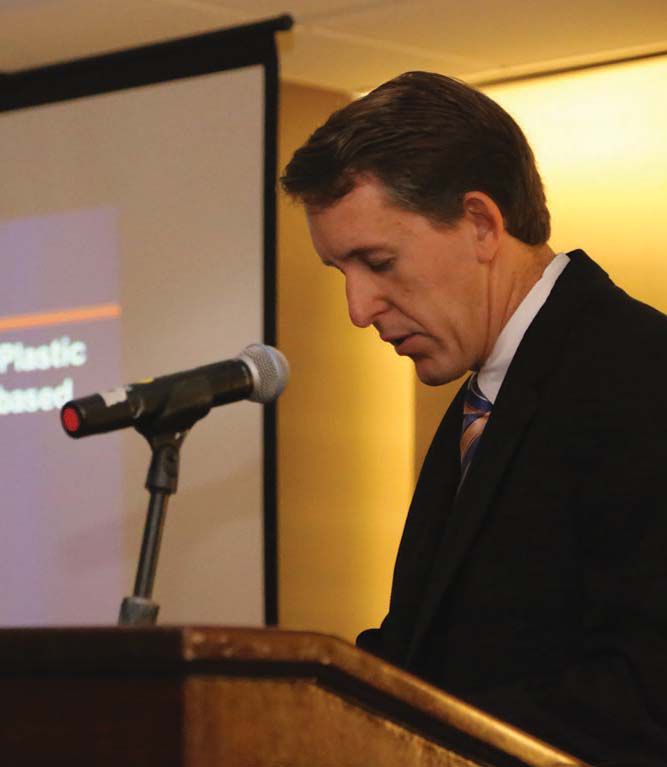What kind of an organization is this?
Edward P. Salek, CAE, Executive Director | TLT Headquarters Report January 2015
Member feedback puts STLE’s value in perspective.

Members give STLE high marks for continually introducing member services such as the 2014 Tribology Frontiers Conference.
TRANSPARENCY MIGHT BE A BUZZWORD in business rhetoric these days, but sometimes you can learn a lot by pulling back the curtains. For STLE you would discover the following.
This is an efficient organization that puts resources to work on projects that benefit members. General and administrative expenses—most people call them overhead—were at 16 percent of total expenses in fiscal year 2013-14, according to the audit report presented to the STLE board last fall. It’s typical for organizations like STLE to spend as much as 35 percent on overhead costs. Devoting more than 80 percent of expenses to things like education programs, publications or other membership services is regarded as exceptional.
Point No. 2: STLE members find their organization to be a valuable resource. In our most recent membership satisfaction survey, conducted by Association Laboratory Inc. (ALI), six of 10 respondents said they were highly satisfied with their membership and seven of 10 indicated they will definitely continue membership. More than half of those questioned rated the value of their membership as very high.
STLE earns good marks because it provides value for your dues dollar. Consider, for example, that STLE membership includes free online access to two respected research journals:
Tribology Transactions and
Tribology Letters. And membership, which is a fraction of the cost of the subscription price for these two resources, allows you to view the current issue of each journal and the archive of all published papers covering a combined 75 years of tribology research.
Point No. 3: STLE knows how to introduce valuable new products. Take the Tribology Frontiers Conference held in the Chicago area last October. More than 200 people attended this event, which gathered corporate and academic researchers from around the globe to explore the role that tribology will play in solving tomorrow’s most critical technical challenges.
In the post-meeting survey of participants, 82 percent of respondents gave the meeting a positive review (either good or excellent) and 86 percent stated that their expectations for the conference were met or exceeded. The next Tribology Frontiers Conference is Oct. 25-27, 2015, in Denver, Colorado (USA).
Membership knows no boundaries, either in terms of geography or technology. The statistics show that 25 percent of members are located outside the U.S., and more than half of our members are estimated to hold jobs with global or multicountry responsibilities. That second figure is up from 42 percent a little over a year ago.
Technical interests, much like job responsibilities, cover a lot of territory. Topping the list of 15 technical areas surveyed in the 2014 ALI membership report were synthetic lubricants, grease and lubrication fundamentals. Not far behind, in the top five, were gears and gear lubrication and environmentally friendly fluids. This last category registered the largest percentage point increase of the 15 topic areas, jumping by eight points from 25 to 33 percent.
Gathering this sort of membership feedback, either through survey research or one-to-one conversations, creates a roadmap to make the organization even more valuable. We look forward to a successful new year, and wish the same to our community of 10,000 individuals and 200 companies and organizations that comprise the tribology and lubrication engineering business sector.
 You can reach Certified Association Executive Ed Salek at esalek@stle.org
You can reach Certified Association Executive Ed Salek at esalek@stle.org.